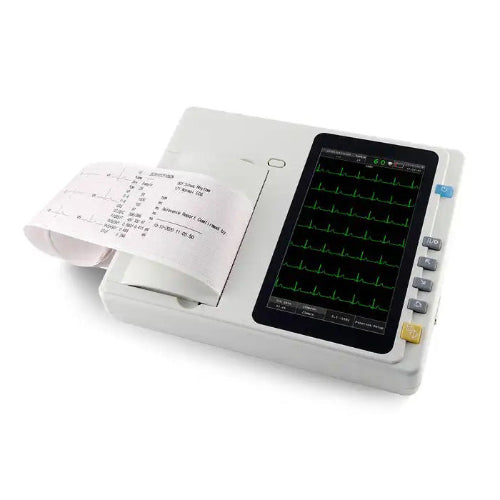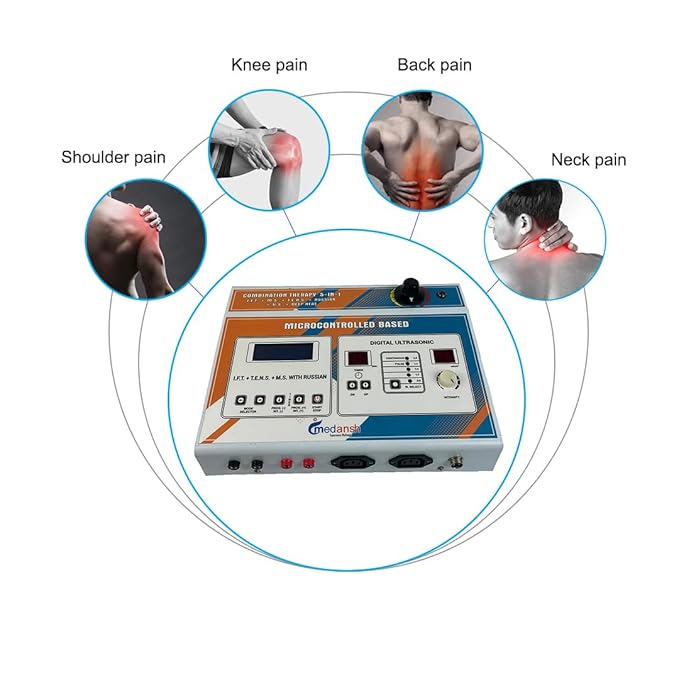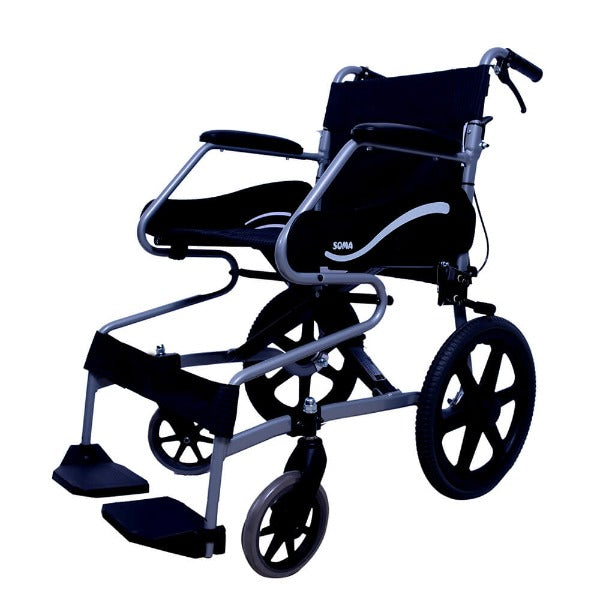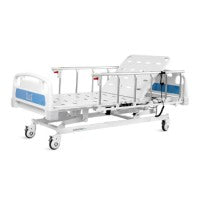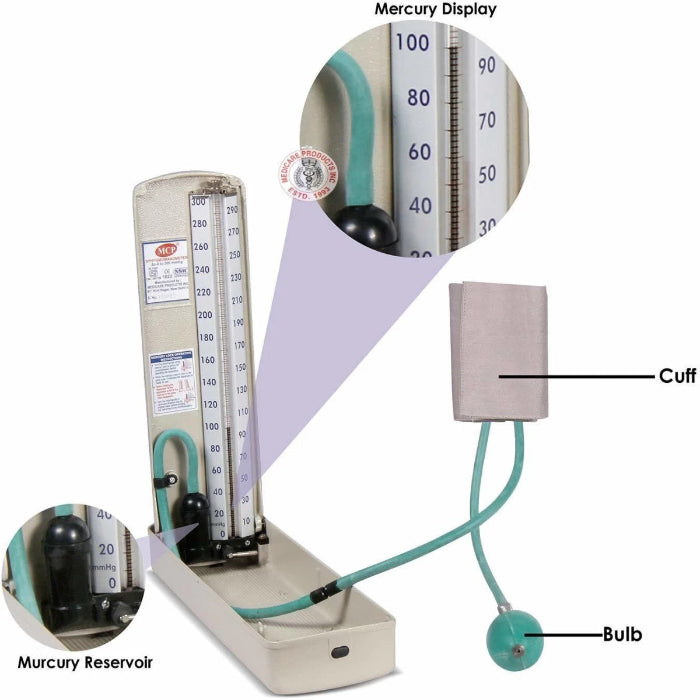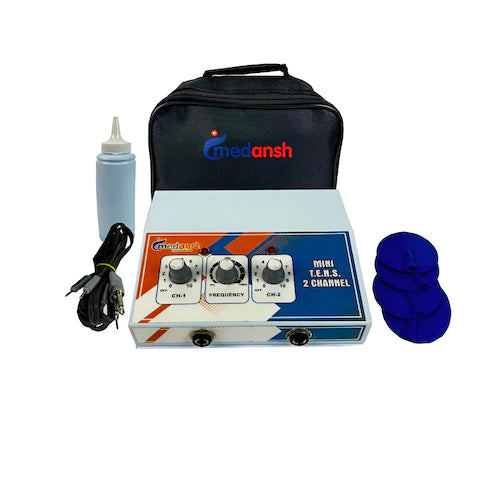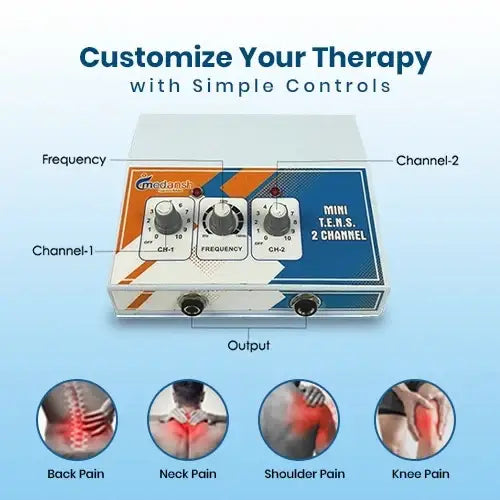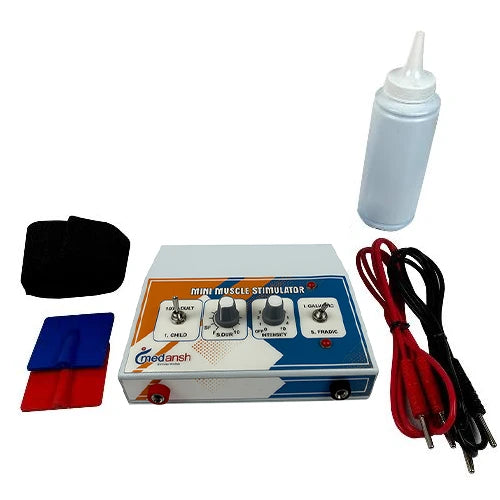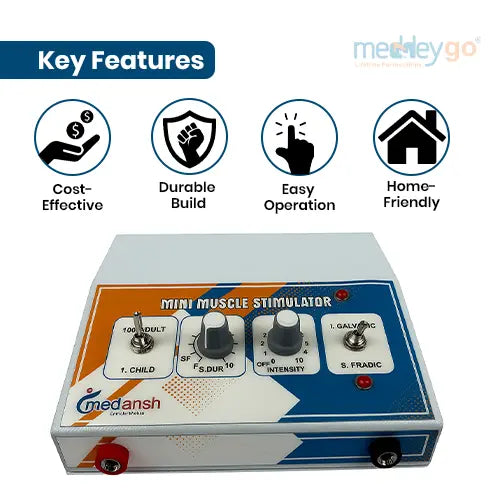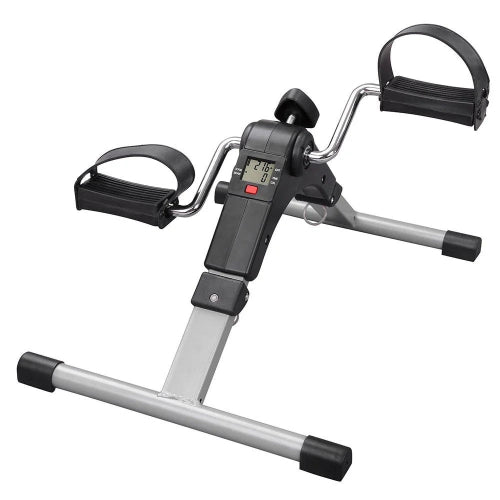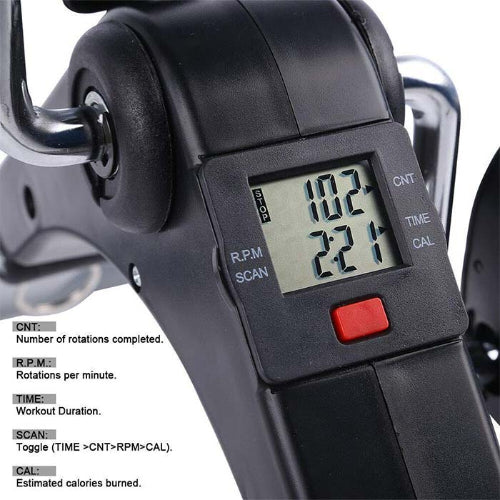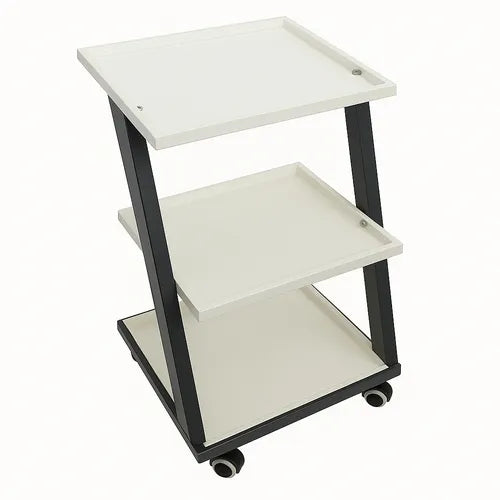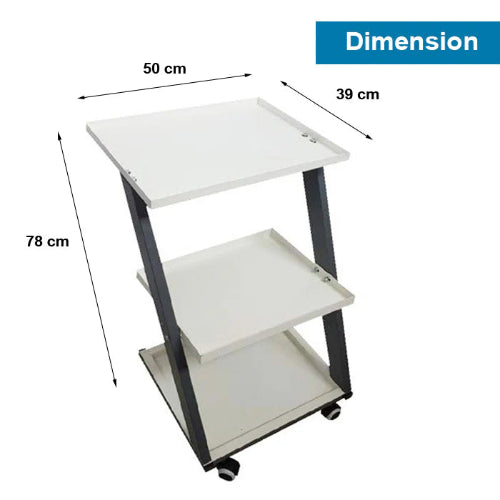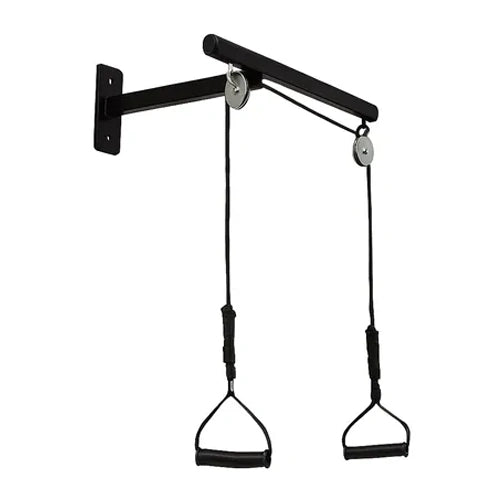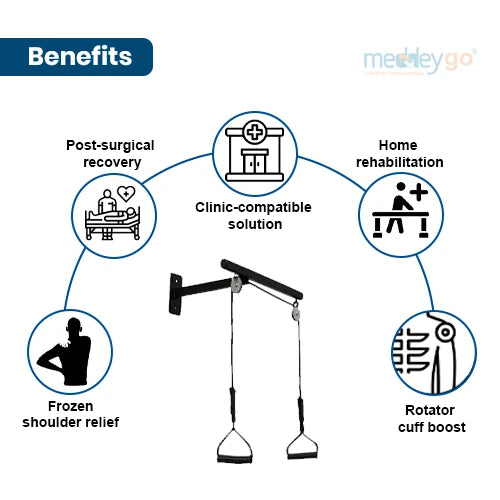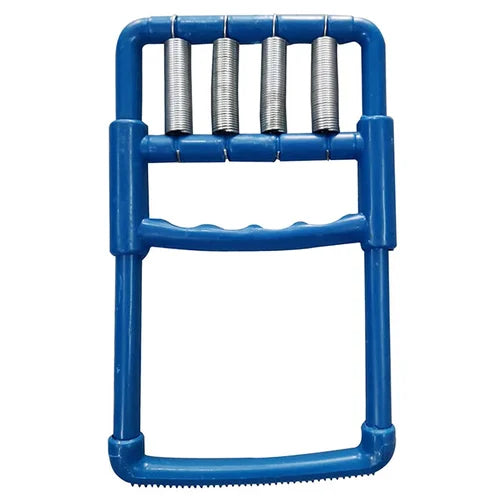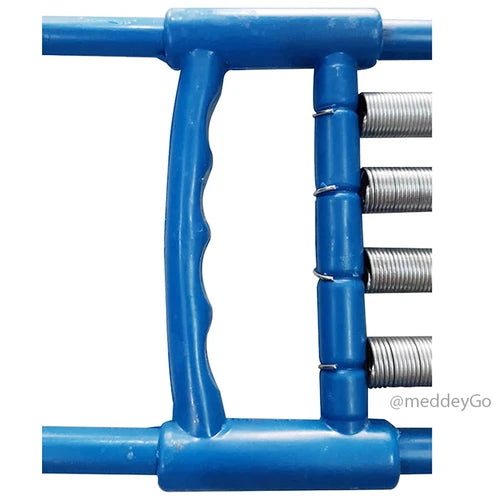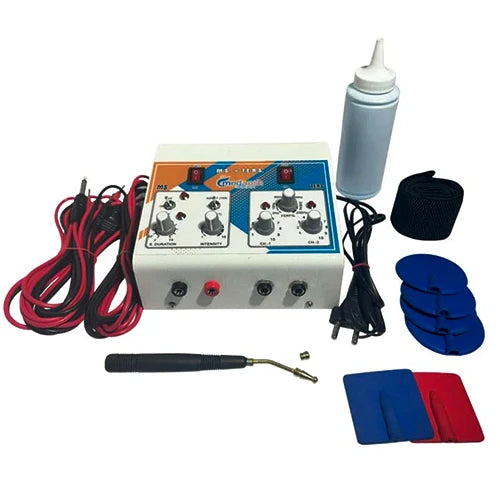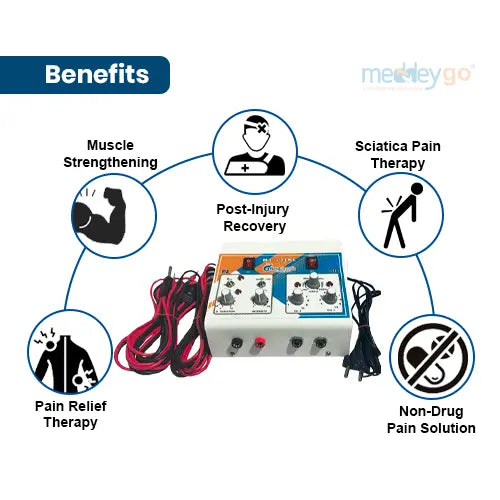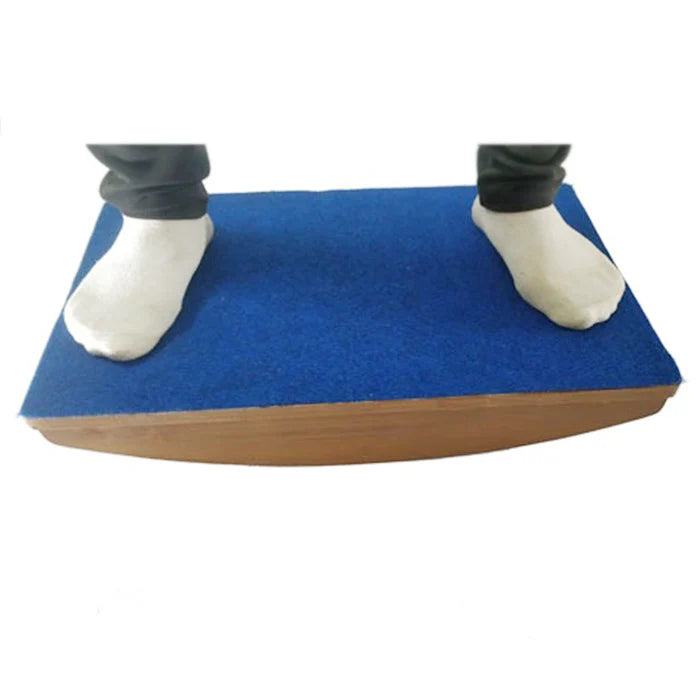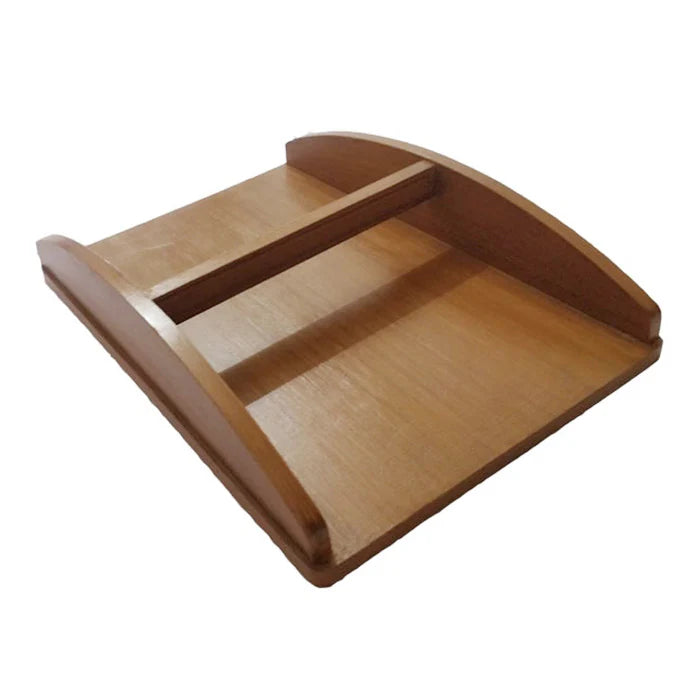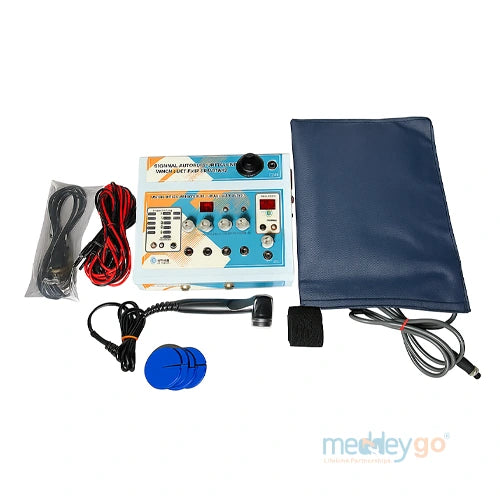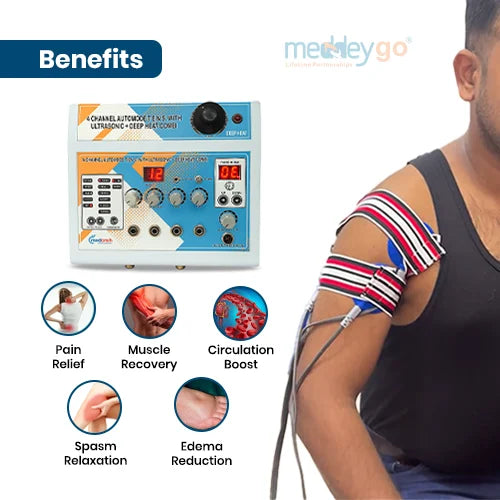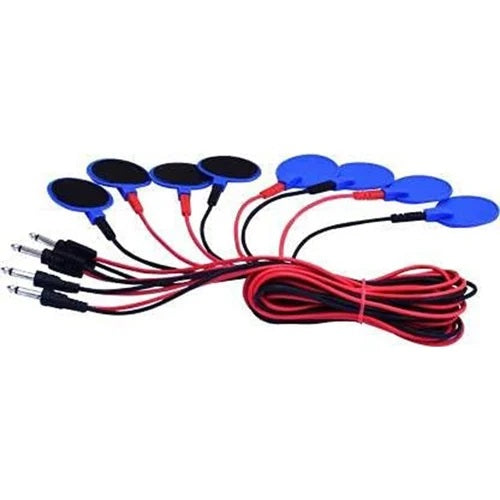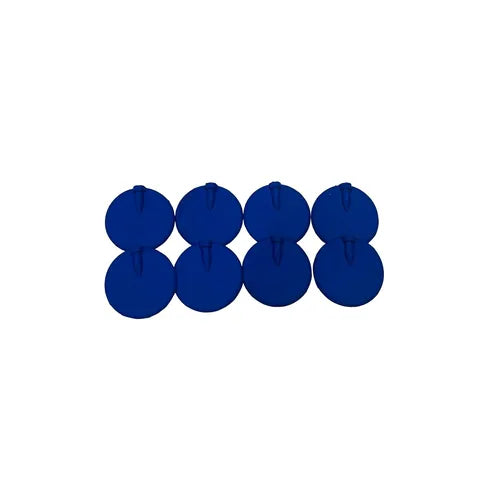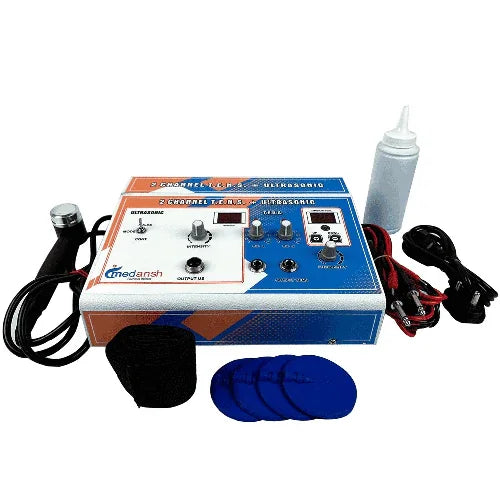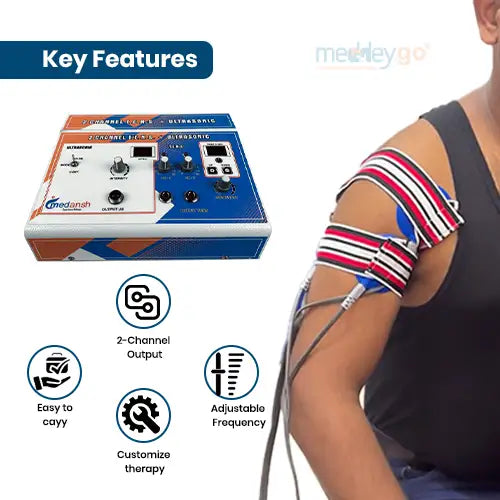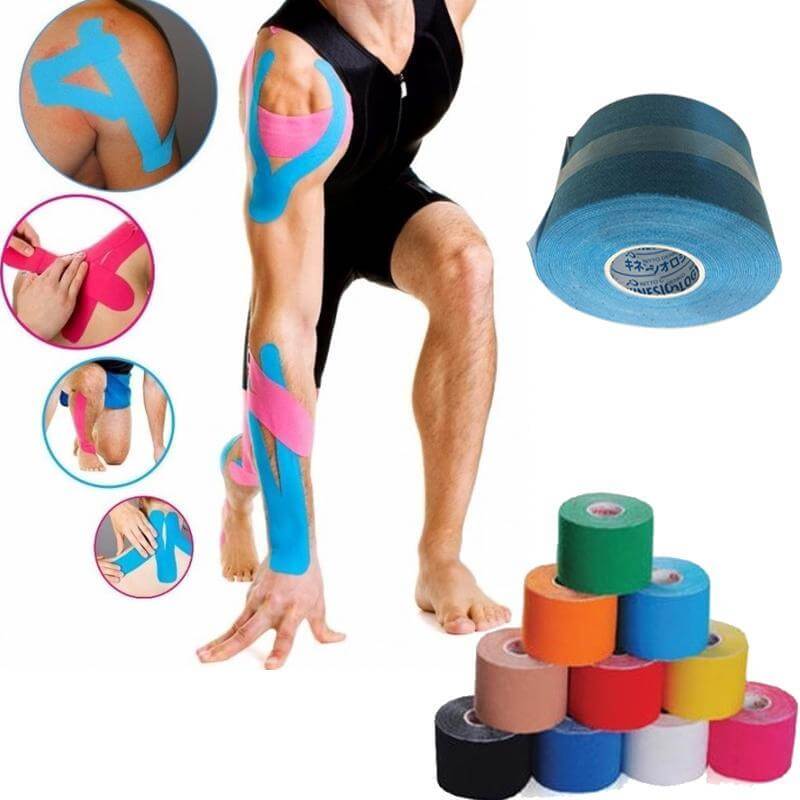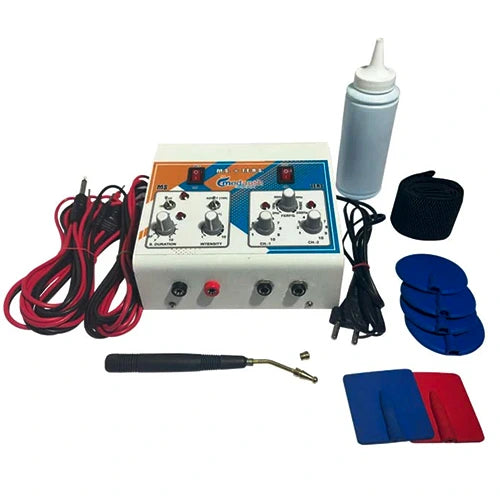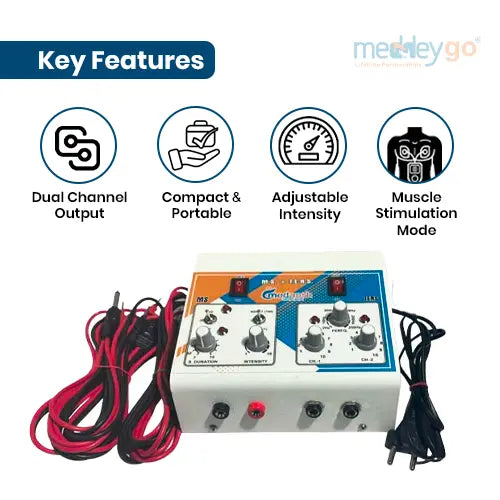Filter
354 products
Type: Modalities
Medansh Portable TENS 2 channel Electrotherapy device for Pain Relief with 1 year warranty
Type: Modalities
Medansh Ultrasonic Physiotherapy Machine – Compact Mini Ultrasound Therapy Device for Pain Relief (1 Year Warranty)
Type: Modalities
Medansh Portable Muscle Stimulator Electrotherapy device for muscle strengthening with 1 year warranty
Type: Occupational
Mini Exerciser Cycle – Compact Fitness Pedal Cycle for Home & Office Workout
Type: Modalities
Medansh Z Trolley
Type: Occupational
Shoulder T Pulley for Frozen Shoulder Exercises Unisex
Type: Occupational
Spring Finger Exerciser Hand Gripper
Type: Modalities
Medansh Portable TENS 2 channel with Muscle stimulator for pain relief with 1 year warranty
Type: Occupational
Balance Board Rectangular Wooden
Type: Modalities
Medansh COMBINATION THERAPY 3 in 1 - TENS 4 Channel Ultrasonic and Deep Heat for Pain management with 1 year warranty
Type: Accessories
TENS 4-Channel Lead Wires with 8 Electrode Pads Compatible with EMS and TENS Therapy Machines
Type: Modalities
Medansh Ultrasonic with 2 channel TENS Combo Machine with 1 year warranty
Type: Tapes & Bandages
Generic Kinesio Athletic Sports Kinesiology Tape - 5m x 5cm
Type: Modalities
Medansh Portable TENS 2 channel with Muscle stimulator for pain relief with 2 year warranty
Type: Modalities
Medansh Mini Digital Ultrasonic Machine With 2 Year Warranty
Collection:
Physiotherapy
Physiotherapy Equipment
Physiotherapy helps people move with less pain. Modern physiotherapy equipment supports that care in simple, safe ways. Hospitals, clinics, and home teams use TENS, ultrasound, and laser therapy for daily rehab. These machines ease pain and loosen tight tissue. Many models are light and portable, so therapists can treat patients at home or in small rooms. Buyers compare features, warranties, and compliance marks such as CDSCO or ISO. They also look for clear controls and quick service. Additionally, preset programs save time during busy shifts. For nearby help, search physiotherapy near me or explore our MeddeyGo collections across India. This guide shows common uses, key specs, and simple budgeting tips for physiotherapy devices.
Who It’s For
Physiotherapy equipment is used by hospital rehab wards, orthopedic clinics, sports centers, and home-care programs across India. Doctors and physiotherapists need reliable machines for pain relief and recovery, while hospital admins and biomedical teams compare electrical specs, channels, and safety features. Purchase teams examine service terms and payment options (EMI or COD) before ordering. Patients using home kits need clear instructions and supervised setups. Overall, this medical equipment is ideal for physiotherapists treating injuries, chronic pain, or post-surgery rehab.
Key Benefits of Physiotherapy Equipment
- Accelerate recovery, and moreover improve patient mobility, with targeted physiotherapy devices.
- Enhance pain relief, and thus reduce medication needs, using adjustable electrotherapy machines.
- Standardize treatment, and additionally cut errors, by using preset therapy programs on each device.
- Improve safety, and therefore protect patients, with built-in auto-shutoff and compliance features.
- Support home therapy, and consequently extend care, through lightweight, portable physiotherapy machines.
- Streamline rehab, and moreover boost efficiency, with intuitive controls and digital interfaces.
- Prevent disability, and thus save costs, by providing consistent mobility exercises and pain management.
- Reduce downtime, and additionally save power, via durable, energy-efficient medical equipment.
- Expand services, and moreover grow revenue, by adopting multi-mode combo machines that replace multiple single devices.
Product Map
| Product | Use Case | Key Parameters | Warranty | Installation/Training | EMI/COD | Consumables |
|---|---|---|---|---|---|---|
| Medansh Digital TENS 2-Channel Device | Portable pain relief for clinic and home therapy | 2 channels; multiple waveforms; 30-min timer | 1 year | No installation; quick demo provided | EMI available; COD in select areas | Adhesive electrode pads, lead wires |
| Medansh 1 MHz Ultrasound Device | Deep-heat therapy for soft tissue and tendon injuries | 1 MHz ultrasound; up to ~5 W/cm²; pulse/continuous modes | 1 year | Quick desk setup with manual | EMI available; COD in select areas | Ultrasound gel |
| Medansh 3-in-1 Combo (TENS+US+Deep Heat) Device | Multi-modal pain management for busy clinics | 4 TENS channels; 1 MHz ultrasound; infrared heat lamp | 1 year | One training session on delivery | EMI available; COD in select areas | Electrodes, gel pads, heating lamp cover |
| Medansh Cervical & Lumbar Traction Unit | Targeted spine traction for neck and lower back | Force 5–60 kg; intermittent/continuous modes; LED display | 6 months | Professional fitting advised | EMI available; COD not offered | Adjustable straps and harnesses |
Features & Specs
Core Features
- Fine-tune intensity and frequency to match each physiotherapy plan.
- Touchscreen controls speed up setup during busy clinic hours.
- Lightweight, ergonomic body supports home, clinic, and hospital physiotherapy.
- Safety interlocks and auto-shutoff reduce risk during treatment.
- Preset programs guide common physiotherapy protocols step by step.
- Clear LCD or LED shows time and intensity at a glance.
- Durable, wipe-clean housing stands up to daily use.
Technical Specs
- Power: 230 V AC, plus or minus 10 percent; uses under 50 watts.
- Outputs: TENS/EMS up to four channels; ultrasound 1 MHz, to about 5 watts per square centimetre.
- Deep heat: Infrared pads or carbon lamps with easy temperature control.
- Display: Backlit LCD or LED with quick keys for time and intensity.
- Timer: Adjustable from 1 to 60 minutes with end alert.
- Safety: Class I, double-insulated design; leakage current under 100 microamps.
- Compliance: CDSCO Class II (India) and ISO 13485 quality system.
How to Use — Step by Step
- Inspect the device, cables, electrodes, and probes for any damage before use.
- Plug in the unit and power it on; set the date/time if required.
- Prepare the patient by cleaning the skin; apply coupling gel for ultrasound or ensure skin is dry for electrodes.
- Select the appropriate therapy mode or preset (e.g., TENS, ultrasound, etc.) based on the treatment goal.
- Attach electrodes or probes to the target area of the body, securing them comfortably.
- Start the session and slowly increase intensity until the patient feels a strong but comfortable sensation.
- Monitor the patient and device; pause or adjust settings if the patient experiences discomfort.
- When the timer ends, switch off the device and remove all electrodes/probes.
- Clean and store the equipment: wipe down surfaces, discard single-use consumables, and log the session if needed.
Safety & Care
Regular care extends device life and ensures patient safety. Before each use, check all cables, leads, connectors, and electrodes for wear or damage. Confirm the unit is properly grounded and the power supply is stable. Use only approved coupling gels and disinfectants specified by the manufacturer. If any error or unusual noise occurs, stop treatment immediately. Store equipment in a clean, dry cabinet away from dust and moisture. Keep the environment free of obstructions to prevent cord damage.
Mini checklist:
- Inspect cables, connectors, and electrodes for damage before every session.
- Wipe down device panels and probes with approved disinfectant wipes after use.
- Store units in a dry, dust-free cabinet or shelf.
- Record any malfunctions or alarms and schedule service if needed.
- Schedule periodic calibration and electrical safety checks.
Pricing & Value
The sticker price is only part of the cost. Consider a 3-year budget that includes staff training, spare parts, power consumption, and downtime. Combo machines cost more upfront but may replace multiple single devices, saving space and training time. Account for consumables (electrode pads, gels, straps) and the staff hours needed for calibration and cleaning. Warranties and service plans reduce repair expenses, so compare coverage terms. Also consider EMI or leasing to align payments with budget. For reference, a high-end laser therapy machine can cost up to ₹1,20,000, while basic electrotherapy units may be under ₹2,000; always weigh upfront price against long-term value.
Procurement Checklist:
- Define clinical needs: List physiotherapy modalities (TENS, ultrasound, heat, combo), channels, and output ranges.
- Verify electrical specs: Match 230 V AC, earthing, surge protection, and correct fuse ratings.
- Assess interface and controls: Prefer clear displays, preset programs, and simple safety lockouts.
- Plan infection control: Choose washable leads/electrodes and single-use consumables where needed.
- Check accessories: Confirm pads, gels, straps, probes, manuals, and carry case for physiotherapy use.
- Consider form factor: Review weight, noise, portability, cable length, and clinic footprint.
- Confirm compliance: Ask for CDSCO details, ISO 13485, and any BIS/EMC test reports.
- Review support: Compare warranty years, response time, spare parts stock, and calibration options.
- Locate local help: Search “physiotherapy near me” plus your city to verify dealer and technician access.
- Compare outputs: Note waveform types, max current/voltage, ultrasound ERA/head size, and timers.
- Evaluate safety: Look for auto-shutoff, leakage current limits, insulated housings, and alarms.
- Plan power backup: Add UPS or stabilizer to protect physiotherapy machines from outages.
- Estimate running cost: Price electrodes, gels, straps, electricity, and yearly service for physiotherapy sessions.
- Request training: Get on-site handover, quick-start guides, and SOPs for home, clinic, and hospital teams.
- Check data needs: If logging, confirm time sync, patient ID entry, export options, and basic privacy steps.
- Inspect build quality: Test knobs, screens, connectors, and lead wires; avoid flimsy parts.
- Validate documentation: Collect invoice, warranty card, IFU/manual, and calibration/service records.
- Confirm commercial terms: Clarify GST invoice, EMI/COD availability, delivery timelines, and return policy.
- Plan scalability: Ensure the physiotherapy device can add channels or new probes later.
- Run a demo: Trial on typical cases; record patient comfort and clinician feedback before finalizing.
Integration & Data Flow
Some advanced physiotherapy systems can record treatment logs. Always sync the device clock and assign a patient ID before use. At the end of each session, save or export the session data via USB or network and verify the transfer. If a transfer fails, reboot the unit and retry. Many hospitals integrate these logs into electronic health records, so match patient IDs to avoid errors. Maintain secure backups of all data to prevent loss during system updates or network issues.
FAQs
Q: What is physiotherapy equipment used for?
Physiotherapy equipment includes devices like TENS units, ultrasound and laser machines, and traction systems to relieve pain, reduce inflammation, and improve mobility. For example, TENS applies electrical pulses to block pain signals, while ultrasound waves boost circulation to speed healing.
Q: How does ultrasound therapy work?
Ultrasound therapy sends high-frequency sound waves into deep tissues. The waves increase blood flow and create a gentle heating effect, which reduces pain and promotes tissue healing.
Q: Can patients use physiotherapy devices at home?
Yes. Many devices are portable and safe for supervised home use. For instance, doctors may prescribe battery-powered TENS units or portable ultrasound wands. MeddeyGo offers compact kits suitable for home therapy, with clear user guides. These tools allow patients to continue recovery outside the clinic.
Q: Do I need special training to operate these devices?
Basic training is recommended to ensure safe operation. The devices generally have user-friendly interfaces, but staff should learn proper placement and settings. Manufacturers often provide manuals and demo videos. Clinics should train one person on setup, and patients using home units should be guided on correct electrode or probe use.
Q: What consumables do physiotherapy devices require?
Common consumables include adhesive electrode pads for stimulators and coupling gel for ultrasound devices. These parts wear out with use, so plan for regular replacement. Traction units use soft straps or harnesses around the neck or waist. Keep extra pads, gels, and straps in stock to avoid interrupting therapy sessions.
Q: What payment options are available for purchasing equipment?
EMI (Equated Monthly Installment) plans are often available on credit cards, allowing you to spread the cost. Cash on Delivery (COD) may be offered by some sellers in certain areas. MeddeyGo supports EMI payments and COD in many pincodes, giving flexibility to align payments with your budget.
Q: What documents should I keep after purchase?
Keep the sales invoice, warranty card, and user manual (IFU). Retain any calibration certificates or service records if applicable. These documents are important for warranty claims, regulatory audits, and scheduling periodic maintenance.
Q: How do I compare different brands or models?
Compare the modalities and number of channels (e.g. 2ch vs 4ch TENS), preset programs, and output intensity levels. Check warranty duration and which accessories are included (electrodes, probes, etc.). Verify certifications (e.g. CDSCO registration or ISO standards) and local service availability. Also consider design factors like portability and interface simplicity.
Q: How often should physiotherapy devices be calibrated or serviced?
Perform electrical safety and calibration checks at least annually, ideally by a NABL-accredited lab for accuracy. Some high-precision devices (like therapeutic ultrasounds) benefit from more frequent calibration. Regular servicing ensures accurate output and patient safety.
Q: What should I inspect before using a device for the first time?
Check all cables, plugs, electrodes, and probes for damage. Make sure the unit is properly earthed and turned on. Verify that safety features (like current limits or emergency stops) are working. This initial check helps catch shipping damage or defects.
Q: How do I find local physiotherapy equipment suppliers or clinics?
Search online using terms like “physiotherapy near me” along with your city name to find nearby rehab centers and equipment vendors. Many clinics and medical supply stores list their equipment offerings online. MeddeyGo also delivers nationwide, so you can order physiotherapy devices even if local suppliers are not easily found.
Q: Who handles service and repairs if something breaks?
Manufacturers typically have service centers or authorized technicians in major cities. MeddeyGo coordinates repairs through certified service partners in India. Ask about loaner equipment during long repairs to avoid clinic downtime.
Q: Who is the manufacturer of this product?
Meddey Technologies Pvt Ltd, C-75, First Floor, DDA Sheds, Industrial Area, Phase 1, Okhla, New Delhi – 110020. Phone: +91 8586-012345. Country of Origin: India.

